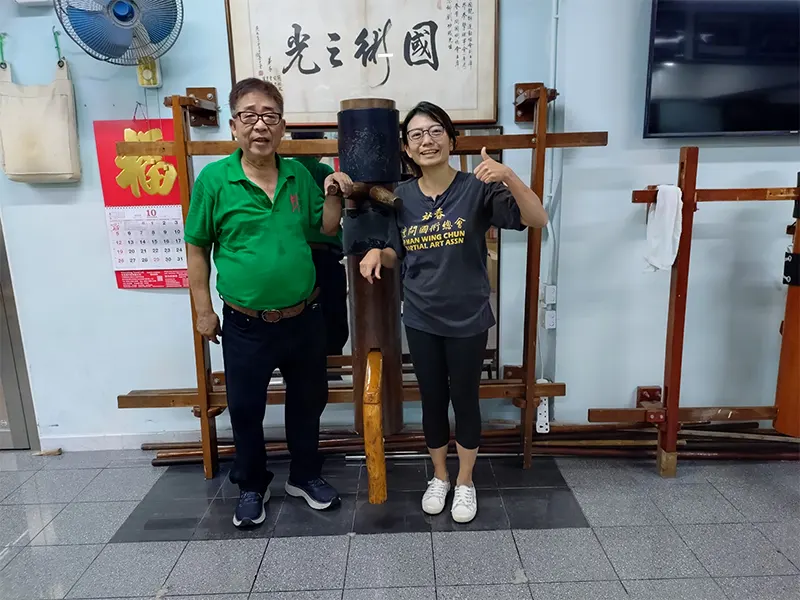Not many parents have asked about it yet, except one – but it is something quite special at Whistle Woods Schoolhouse. Among our enrichment programmes for the older children (ages 5 and 6) in our full-day programmes, there is one that surprises people: Wing Chun 咏春拳,a traditional Chinese martial art.
That parent had asked who conducts the lessons. The answer is me! I’m the founder of Whistle Woods Schoolhouse, and I’ve been practising Wing Chun since 2007. My journey began in Hong Kong under the guidance of Master Sam Lau, a first-generation disciple of the legendary Grandmaster Ip Man. That makes me a second-generation disciple. Over the years, I’ve also assisted in teaching children’s and parent–child Wing Chun classes. This year marks my 18th year in the art – a humble milestone compared to some of my “Wing Chun brothers 师兄”, some of whom have trained for over 40 years! But in Wing Chun, discipleship is less about years and more about a lifelong commitment to upholding traditions and values passed down through generations.
You might wonder, Why Wing Chun for preschoolers? Beyond the kicks and hand movements, Wing Chun offers children lessons that go far beyond physical strength. Here are three important benefits children can gain from learning it:
1. Respect and humility
Each session begins with a hand gesture and bow – a sign of respect to both the teacher and one’s training partners. Every person you practise with helps you improve, and gratitude for that builds humility and empathy. When respect forms the foundation, the learning environment naturally becomes positive and encouraging.
2. Discipline and self-regulation
Wing Chun teaches children to feel strong, yet stay calm and in control. It takes discipline to attend class consistently, to push through challenges, and to embrace moments of “tolerable hardship.” Through these experiences, children learn perseverance and the value of steady effort, lessons that apply well beyond martial arts.
3. Focus and concentration
In sparring, even a brief lapse in attention can lead to mistakes, so focus becomes second nature. But Wing Chun also trains focus in stillness. The first form every student learns, Siu Leem Tao 小念头 (translated as “a small seed of thought”), involves slow, deliberate movements that require concentration rather than speed. It shows children how focus grows when the mind and body work together.
Of course, these qualities take time and patience to develop, especially for young children. That’s why our approach to teaching Wing Chun is process-driven, not outcome-driven. What matters most is not technical precision, but nurturing growth and character over time. At Whistle Woods Schoolhouse, we strive to equip children with values and skills that will stay with them long after preschool. Many of these, such as focus, self-regulation, respect, and confidence are intangible, but they form the foundation for lifelong learning and emotional resilience. Wing Chun is just one of the meaningful ways we help children grow — one movement at a time.
If you are curious about how Wing Chun or any of our school’s programmes can help your child to grow, we would love to connect and share more with you. You may wish to schedule a school tour soon, or register for our upcoming Open House on 15 Nov 2025. https://whistlewoods.com/open-house/
Warmly,
Eiling


